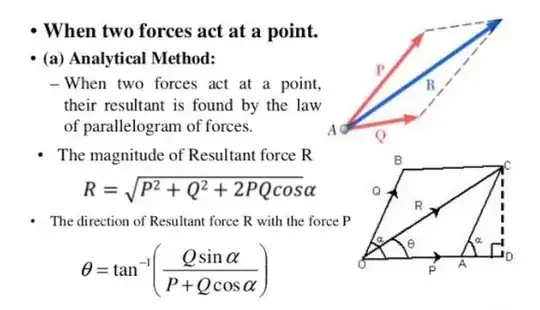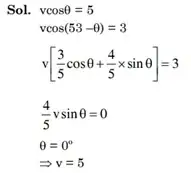Consider the following two situations.
Case I
I am able to solve this question. The answer to this question is = 5 m/s. I have attached the solution in the end.
This is not the doubt. Kindly read further to understand the theoretical doubt.
Case II
Now, in Case I, suppose we replace the velocities by two Forces F1=5N and F2=3N, applied on the body in the same directions as in Case I and we are supposed to calculate the net force on the body, and this modified situation, we call Case II.
Now, in Case II, we can apply the formula for net force given by the Parallelogram Law of Vectors as shown below and that gives the right answer in Case II. But, interestingly, when the same knowledge of Parallelogram Law is applied in Case I, it doesn't give the right answer. According to my textbook applying Parallelogram Law in Case I, like Case II, is wrong. I do not understand the reason behind it.
Both, Force and Velocity are vectors and Parallelogram Law of Vectors, as I understand, should be applicable for all the vectors, so why it is the case that Parallelogram Law of Vector Addition gives the right answer in Case II, but NOT in Case I.
Why are we treating the Force Vector and Velocity Vector differently?
I would appreciate both - Mathematical and Intuitive Understanding.
The solution to Case I. Let's say the net velocity is V then the components of this velocity along V1 and V2 should be equal to V1 and V2 itself, due to string conservation and hence following is the solution. "Theta" is the angle net velocity makes with V1 (Let's say).


